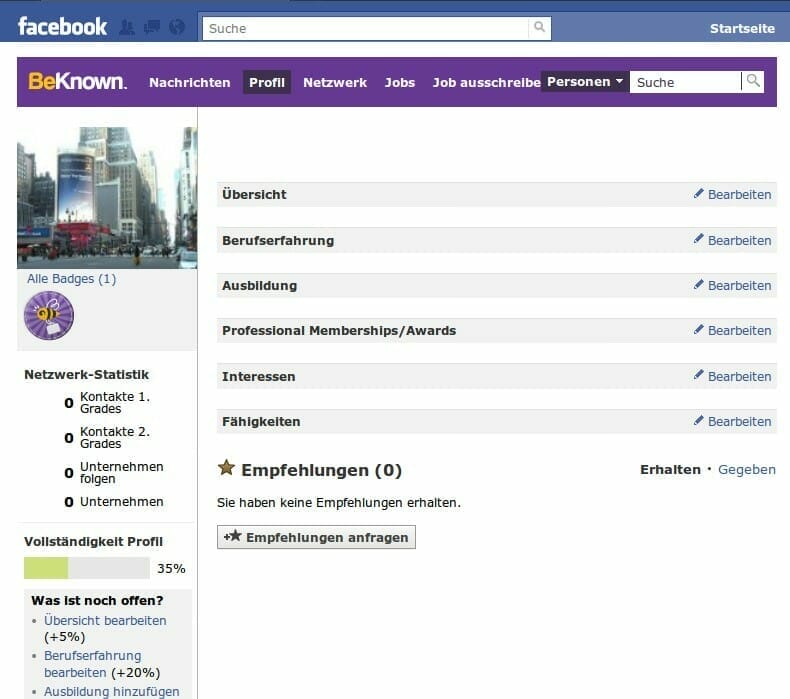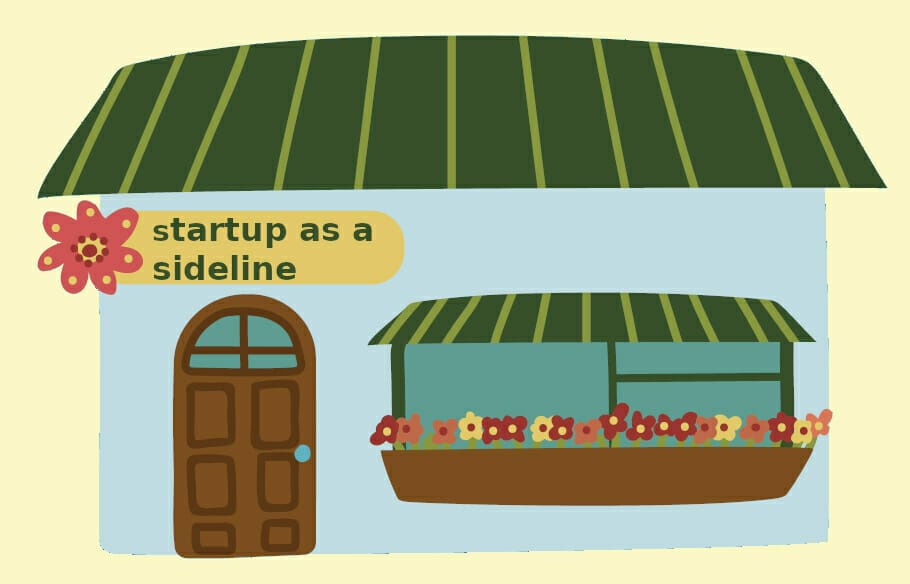For their successful, good life Information you really need: Government-funded publisher, awarded the Global Business Award as Publisher of the Year: Books, Shops, data-driven AI-Services. Print and online publications as well as the latest technology go hand in hand - with over 20 years of experience, partners like this Federal Ministry of Education, customers like Samsung, DELL, Telekom or universities. behind it Simone Janson, referenced in ARD, FAZ, ZEIT, WELT, Wikipedia.
Disclosure & Copyright: Images created as part of a free collaboration with Shutterstock.
Decision-making pleasure vs. Fear: solve problems efficiently
By Simone Janson (More) • Last updated on October 18.10.2023, XNUMX • First published on 17.12.2018/XNUMX/XNUMX • So far 5840 readers, 1280 social media shares Likes & Reviews (5 / 5) • Read & write comments
decisiveness and Anxiety vor der decision are two antagonists – and indecisiveness unfortunately happens more often than many would like. But what is behind the fear to decide? And how can problems still be solved efficiently?

- Do not be afraid of the decision!
- prevention strategies
- Decisions - always the better choice
- How business decisions work
- A bad example
- The optimal strategy
- Set
- Patrick's goals in his decision:
- Goals should be SMART
- Find alternatives
- Evaluate alternatives
- Facts, facts, facts
- Security, what is right and what is wrong, does not exist
- Research information in a targeted manner
- The power of numbers
- Balance the pros and cons
- Where do you set your priorities?
- No time - and now?
- Ratio or stomach?
- Your moment of clarity
- When the gut feeling deceives
- A structured analysis brings clarity
Do not be afraid of the decision!
The unwise Strategy many perfectionists, mistakes and Criticism Trying to avoid at all costs is not only stressful for you, it also has far-reaching consequences.
- What is important in your job?
- Of course you should do your job well. But does not this work consist of many big and small decisions?
- Better first eMails or work on the project?
- The documents for the boss with paper clips fix or zusammenmember?
- Say something in the meeting or better not?
- Give the customer the discount or insist on his own position?
- Turn Mr. X or Ms. Y into a department head?
Such and similar thoughts accompany your entire daily routine - and you make many decisions so unconsciously that you barely notice it yourself.
prevention strategies
A good decision is actually nothing more than that Solution a problem. For example, if you think about which ones Tasks you are supposed to do first, there is Problem in how to work most efficiently. The speech in Meeting or the optimal conclusion with one customers could improve your career prospects.
Within the Choice of the department manager, you ask yourself who could best master this important task. And even if you choose between paperclips or staple guns, you're solving one problem - yours Executive might not be satisfied with your work (of course only if you consider that he is always annoyed by stapled documents!). Every time you make a decision, you want to improve the current situation. And it is precisely this problem-oriented way of thinking that creates new ones in many situations ideas and innovations.
Decisions - always the better choice
On the other hand, if you are indecisive, you deny yourself the opportunity to actively influence the solution of a problem. But if you Honestly you have already made a choice – right? Therefore, even a wrong decision is better than none at all, because only through an active decision do you have the opportunity to act.
But that is precisely why so many decision-less perfectionists still hope that a problem will solve itself on its own: Any decision carries just the risk of bet on the wrong horse. It also means to commit oneself and to give up all other possibilities. This is where the dog is buried for perfectionists: they would rather keep all options open; it would be unthinkable for them if later on they would receive information that would have allowed them to make a better, right, even perfect decision. Fearing to make the wrong choice, they therefore prefer to delay the decision for as long as possible, to circumvent it or even to pass it on to others - sometimes with absurd results.
How business decisions work
The head of the marketing department does not decide on an advertising text, but the accountant has the last word. When an order is placed, the manager of the company's own kindergarten (as a member of the works council) must not be left out, because the boss does not want to ignore anyone. Even the decision-maker who decides to award a contract due to lack of time on the golf course is a perfectionist, at least here: That Projects, which has been in his for weeks Office lay, he didn't even look at himself in the all-or-nothing attitude typical of perfectionists; he preferred to suppress his fear of the decision by playing golf.
Would you rather play golf than having to make a decision? Unfortunately, that's not as fun as it sounds. Whoever is constantly undecided will fast dissatisfied and also gets in his own way with his bad mood. Worse still: those who cannot make up their minds are often perceived by others as insecure and appear incompetent to the outside world. Anyone who wants to keep all options open will soon be seen as unreliable. Especially in positions of responsibility, these qualities are not exactly helpful, but are interpreted as leadership weaknesses - this is not an image gain for you or your company. So it's no wonder that the psychologist Jochen Albert describes indecisiveness as the number one career brake.
A bad example
Patrick, project manager of a larger one, has that too Company, experience. For an important project, certain targets have to be achieved. Patrick has his Employees divided into several teams. However, problems soon arise: a team leader tells him that he cannot meet the targets with this budget. At the same time, the boss makes other suggestions that should improve the project, but from the original one Objective differ. Patrick feels overwhelmed. He cannot decide whether to continue the project as originally planned or to change the objective. Not to mention the budget issue...
If he talks to the boss, he says, he'll think he's incompetent! And what should the team leaders think when he asks them for advice? After all, he wants to prove that he is simply perfect for this task. He ponders back and forth for a long time, wanting to see how the work on the project is developing so that he doesn't make the wrong decision. He asks the team leaders to keep him up to date on every step, no matter how small Information makes the decision easier for him – or so he believes. In reality, the constant feedback confuses him even more. Finally, when time is running out, he decides to involve the team leaders. He dictates without further ado Memorandum with the boss's suggestions. In the project meeting he explains: “Unfortunately, I have to react flexibly to the constantly changing conditions and can therefore not say anything clearer. But you now have all the important information yourself. Please implement the guidelines as best as possible.”
The team leaders feel overwhelmed and left alone. Everyone tries in their own way to implement the instructions as well as possible. But since Patrick ultimately gave them neither a uniform line nor a clear, common goal, the project ultimately never comes to an end. His superior is indignant: “Your job would have been to take responsibility by turning my suggestions into a clear and unambiguous goal forms, so teams know what to stick to. If you had any problems, you should have spoken to me." Patrick, on the other hand, feels innocent and defends himself: "I just wanted to do my job as well as possible and that's why I passed on all the important information to everyone so that everyone involved can get their own picture of the situation."
The optimal strategy
Another important aspect of solving a problem is the right strategy or, if you like, your method: how you decide which of the available alternatives you choose depends essentially on your goal. In addition, other factors, such as your budget, also play a role. Taking all factors into consideration, you will then make your decision in the end.
For example, if your goal is to become fluent in Spanish in a year, there is no point in choosing a community college course, even if the Costs is very low. You should then opt for a more efficient method.
Set
At the beginning of every decision there is a goal, namely the solution to a problem. The clearer the goal, the easier it is to make a decision. For example, if your goal is to work abroad, you will find it easier to choose a language course than if you “just want” to brush up on your foreign language skills because it might be good for the job. Because when you know what you want, it falls to you light, to develop the right strategy that will lead you to your goal.
Patrick, for example, is supposed to set up a project within a certain period of time - that is his goal, the prerequisite for his actions. This is set by his boss and cannot be changed. Be clear about the requirements and Set Have your choices. Once you have established these, there is no need to ponder them during your decision-making process. Put your requirements and goals in writing - with Patrick it looks something like this:
Patrick's goals in his decision:
- The boss should be satisfied.
- The project should be a success.
- The ideas of the boss should be considered as far as possible.
- I would like to delegate as much work as possible to the project leaders.
But probably not all goals suit you that way clear in Eyes, some goals you formulate rather unconsciously. So did Patrick, for his Behavior mistakes in reasoning in the decision-making process, which are not uncommon for perfectionists. His ultimate goal was to bring the project to a successful conclusion. Soon, however, another goal unconsciously gained the upper hand - namely, to fight one's own insecurity. From then on, this became his main goal – albeit unconsciously. This gave rise to his endeavor to collect as much information as possible in order to be able to make the best possible decision. This also explains why Patrick finally transferred the responsibility to his team leaders: In this way he was able to give up the associated uncertainty, at least for a short time.
So Patrick misjudged his need for security and his ability; his goal of successfully completing the project was unrealistic. In fact, you can only make a good decision if you have a good goal in mind. And good goals are SMART. SMART stands for the following characteristics that your goal should definitely unite:
Goals should be SMART
| What does SMART mean? | |
| S | Specifically concrete, simply formulated, self-initiated: Do you have a concrete visual, verbal and emotional idea of your goal that you can express briefly, concisely and precisely in one sentence? And can you influence your goal yourself or are you dependent on the reactions and influences of your environment? Because only when these conditions are met will you be able to keep your goal in mind. This is exactly where Patrick's mistake lay: his goal “The project should be a success” is far too vague - he should have defined more precisely what success means for him. He made this success dependent on the opinion of his boss and could no longer influence his goal himself. So it's no wonder Patrick lost sight of his goal in the course of his decision-making process. |
| M | measurable: Your goal should also be formulated so that you can always check whether you have already achieved it or not. But you must first determine where your bar is. Again, it helps you to get the most accurate picture of your destination. Because if you know what your goal looks like, then of course you also know exactly when you have achieved it or if you still have to work towards it. |
| A | attractive, as-if-now formulated: It is also important that the goal appears attractive to you. You should therefore check critically whether the goal is really your own interest or was put in front of you by someone else - as happened to Patrick. He was supposed to implement the specifications of his boss, but could not properly incorporate them into the project and therefore not really aim at the goal. But his mind was constantly preoccupied with this difficult problem and only focused on it. And this is exactly where the solution lies: If the decision is already difficult for you, you should concentrate on the liberating result instead of the oppressive decision-making process. So instead of thinking over and over again how difficult this decision is, imagine how good you will feel when you have solved this problem. In addition, it is imperative that you formulate your goal in the present tense: “I begin ...”, “I do ...” or “I say ...”. If you use plasticizers like “I would like to”, “I want to” or even “I should…” instead, you will lose sight of your goal much faster. |
| R | Realistic: In order for you to achieve your goal, it must be realistic. This means that you have to carefully check whether the set goal is also within the scope of your personal abilities and possibilities and whether the current environment allows you to achieve your goal. You can, of course, get the opinion of your fellow human beings (but beware: do not rely entirely on the opinions of others). But if you are honest with yourself and use common sense, then you can best judge what is feasible or not for you. Patrick's goals of meeting his boss's demands, sticking to the budget, and completing the project in the best possible way are unfortunately not tenable in reality. At one point he will have to cut corners. |
| T | Defined timing, totally positive: But there is no point in getting a concrete picture of your goal if you don't specify exactly by when you want to have achieved your goal. Patrick, for example, only has an approximate indication of when he must have completed his project. That was another reason why he could delay his decision again and again until it was finally too late. Had he nailed himself to a certain deadline, that would not have happened. At the same time, you should make sure that you always achieve your goals in a totally positive way and without critical comparison: Patrick, for example, resolves: “In the next project I want to be more decisive than this one”. With this goal in mind, he will always hold up against his mistakes, which depress him and ultimately hinder him in the implementation of new goals. Only a positive goal without comparisons and negative associations gives you the necessary incentive. |
Find alternatives
Once your goal is determined, you should list the different alternatives. It is important that you really include all possible options. As a perfectionist, you run the risk of getting stuck in the typical black and white grid and thus limiting your scope for decision-making to just two alternatives from the outset. Like Patrick, whose alternatives were: "I manage the project perfectly or I'm incompetent!" He would probably have put less pressure on himself if he had also considered other alternatives. So he could have said to himself that a partial success is already a Success is, or that the project may be adjourned. It would have relieved himself of the pressure to be absolutely perfect.
Now take your time to think about what alternatives there are for your decision. Because having alternatives is always better than just being able to choose between two extreme options. Patrick initially thinks he only has them Alternativesto choose between "I'm doing everything right" and "I'm doing everything wrong". Only when he thinks about it longer does he realize that there are a number of other alternatives. Not having to decide in the all-or-nothing categories any longer makes his decision much easier.
Evaluate alternatives
First, write down all the alternatives, as shown in the overview below. Are there already one or more alternatives that you want to intuitively choose? But also make a note of alternatives that may seem completely unrealistic to you, as you may decide after a thorough examination just for the most unlikely route. When you list the possibilities, it is important that you also capture spontaneous feelings, ie your intuition. If you want, you can do that in the form of smilies or numbers between 0 and 5 (0 stands for negative, 5 for positive).
| Patrick's list of alternatives and his spontaneous rating | ||
| Alternatives | Spontaneous feelings | Rating |
| We comply with the boss's instructions, even though we are likely to overstate the budget. | Would be great, but probably too expensive. | 4 |
| I am pulling off employees from other projects so we can create this project. | That would be best, but it will be hard to do. | 3 |
| I am looking for particularly cheap labor, for example, interns who support my staff. | I have stomach ache. | 0 |
| We forget the boss's instructions and carry out the project as intended. If we succeed and keep the budget, the boss will not complain. | Great idea, but if that really works? I am afraid that the boss will get angry. | 4 |
| I work even more. | Then I fold up. | 0 |
| I talk to the boss, that it does not work and we need more budget or other requirements. | Then I stand as incompetent. But maybe the boss understands me too. | 3 |
Facts, facts, facts
If you're going to consider the possible consequences of each of your alternatives, you need facts to make the best decision possible Background and to clear conscience. This brings you to the most complex phase of the decision-making process, because researching this information takes time. But note: Of course it is usefulIt is important to be well informed, because you will be better able to justify a well-considered decision to yourself and others afterwards. But as a perfectionist, you might tend to overdo the research a bit in order to make your decision as secure as possible against criticism and to evaluate all alternatives as objectively as possible. Then you may run out of time.
That's how it went for Patrick, whose strategy was: Make the best decision and collect as many facts as possible. As a typical perfectionist, he believed that the more he knew about a problem, the better he could make decisions. The high costs, namely the loss of time and the possible failure of his project as a result, seemed secondary to him. In fact, quite a few perfectionists waste a lot of time meticulously hoarding information and looking at a problem from all angles because they think they can solve it better that way Control to have - the thinkaholism says hello.
Security, what is right and what is wrong, does not exist
But let's be honest: based on the information available and the experience gained, you can hypothesize what will happen if you choose this or that alternative. But you can not predict with certainty how things will develop. Of course, it can happen that you make a decision today and get information tomorrow that shows that your choice was a mistake. And it may as well be that the decision has other consequences than you expected. Because: The optimal decision, which is infallible now and for all time, does not exist! You can only choose from the information available to date - and that's the best way to balance costs and benefits, the best you can do. On the fact that conditions can change suddenly, you have no influence.
Going back to the simple example from the beginning of the text: if your boss has always wanted to read his documents in stapled form, you will always choose to stapled documents. However, your boss may be his Opinions suddenly changes and prefers paperclips because he wants to separate the documents from each other again with little effort, but doesn't tell you anything about it. You would then continue to use the stapler because you are missing the important information, but your decision would be wrong and, contrary to what you expected, your boss might be angry. Only: Even with all your perfectionism, you couldn't have done it better, because you simply didn't have the important information about your boss's new preferences. Collecting and weighing up all information at all costs is therefore not necessarily an advantage for a good decision.
Research information in a targeted manner
In order to get enough well-founded information in the time available to you, you should research in a targeted manner. Limit the flow of information from the outset by asking specific questions about every aspect of your decision. The question "What can I do?" doesn't get you any further because it's far too imprecise. Be more specific, because you will only get useful answers if you ask precise questions. Make sure Ask for each of your alternatives - only then will you get an objective picture. Write after Pattern Write a list of specific questions from Patrick as in the overview below and note where you can find information on them. Weight by numbers: what exactly do you need to know (5) and what not (1)?
| Patrick's questionnaire for the information search: | ||
| Examples of exact questions | Where can I find the information? | Important? |
| Did other departments have similar problems and how were they resolved? | A similar project has recently been carried out in the neighboring department. | 5 |
| How does the boss usually react when told that his requirements can not be met? | Secretary of the boss, experiences of other employees | 4 |
| And how else did the boss react if the budget was exceeded? | Secretary of the boss, experiences of other employees. | 4 |
| Are there other, less important projects from which employees could be withdrawn at short notice? | For this purpose, the boss himself can provide information. | 5 |
The power of numbers
"Wait a minute," you'll say, "so when I'm making a decision, I'm supposed to gather fewer facts and think less rationally? Should I just make decisions based on gut feeling?” No, of course not: You can continue to make decisions as rationally as possible and research facts that will help you make your decision. You can do this best, however, if you work consistently towards your goal, collect information in a structured manner and set a clear point in time for your decision. With such a structured decision-making process, you will probably feel more secure as a perfectionist.
If it turns out afterward that your choice was wrong, you do not have to blame yourself. After all, you have deliberately made your decision to the best of our knowledge and belief based on the information available. At that point, the decision was just optimal. And there is another plus: if you have weighed carefully, you can better represent your decision to employees and colleagues.
Balance the pros and cons
Making a decision means nothing other than weighing different alternatives to achieve a goal against each other. For example, when it comes to choosing the best language course: In this case, you need to consider the costs and benefits of different language learningMethods weigh up to get to your goal, something like: “The Privatecourse is twice as expensive, but twice as effective”, or: “The adult education center course is only half as effective, but more than three quarters cheaper.”
You can of course use the arguments in your Head toss and turn. However, it is better to write them down – for example as a pros and cons list. Another possibility is to only rate the different aspects with + or - and to calculate each alternative with all the consequences for itself, as shown below.
The consequences are also the criteria for your decision. Evaluate the criteria with numbers between 1 and 5. You forgive 5 if you expect this to happen in the same way and 1 if not. Describe your opinion in more detail in words. Evaluate all alternatives according to the same criteria; only then can you compare! For important criteria you double the value - for all alternatives!
Where do you set your priorities?
For Patrick about is the satisfaction of his boss more than anything else, so he multiplied that number by two. If you add up the values in each case, you will immediately see how you should – in purely mathematical terms, of course – make the best decision. The following examples, which represent Patrick's decision, show you what this can look like. In the following example, only two possible alternatives were selected and shown for reasons of space:
| Patrick's alternative: I'm talking to the boss | ||
| Satisfaction of the boss times 2 | 3 | He'll be angry, but maybe he'll understand. |
| We make the project good and punctual | 5 | If the boss makes other specifications, the probability is high. |
| Satisfaction of the team leader | 5 | They'll be happy too when I talk to the boss. |
| Satisfaction of employees | 5 | They'll be happy too when I talk to the boss. |
| My personal stress factor | 1 | First of all high, because I have to let me have a taste of the boss. |
| Total | 22 |
| Patrick's alternative: We do it the way we think and say it to the boss | ||
| Satisfaction of the boss times 2 | 4 | If we can manage it, he will probably be satisfied, but there is a risk. |
| We make the project good and punctual | 5 | If we do it the way we think it is very likely. |
| Satisfaction of the team leader | 5 | High satisfaction, if everything runs smoothly. |
| Satisfaction of employees | 5 | High satisfaction, if everything runs smoothly. |
| My personal stress factor | 3 | First of all, not too high, but if it goes wrong, I'm responsible. |
| Total | 26 |
From a purely mathematical point of view, in this example, the alternative of simply carrying out the project, as expected, has the most points. Patrick could now decide to implement this and be satisfied with it. He has made his decision according to very rational and logical considerations and met his personal goals. Maybe he should also remember what he thought spontaneously when he considered his alternatives: Here, too, had liked this alternative with the best. It is clear that he decides both emotionally and rationally for this alternative. The rational considerations have confirmed this judgment.
No time - and now?
Perhaps your calculated result is in contrast to your spontaneous gut feeling; then you have to weigh up what is more important to you. Unfortunately, nobody can give you the general advice: always listen to your gut or always listen to your head. Depending on the situation and your personal requirements (think of your framework!), you have to decide for yourself again and again. Consider the various arguments again. You can also do a little yourself outsmart, by tossing a coin - not to decide, but to realize what you actually want: Even while the coin is tossing, you might be hoping for heads because you actually want to cut salaries. Or you react spontaneously with reluctance when the coin hits tails because you don't want to restructure.
Unfortunately, you don't always have the time to carry out a structured analysis in your day-to-day work. You have to make many decisions ad hoc and instinctively. Many People act instinctively in such cases. But there is a risk of making wrong decisions
Ratio or stomach?
In principle, such intuitive processes work just like a structured decision - but unconsciously and often in fractions of a second, so that you don't even notice it: You have a goal in mind, weigh the information you have - and decide for or against one Alternative. Who here fast and for sure being able to make decisions has a clear advantage in everyday working life, because he is seen as decisive and confident.
Such intuitive decisions also carry risks: Contrary to popular belief that the first, intuitive decision is right, many psychological studies have shown that it is almost always better to change your mind rather than stick to the first intuition. Because changes are much more likely to turn a wrong one into a correct answer than the other way round. Therefore, it is not so wrong if you occasionally feel the perfectionist inclination to hesitate and reconsider your decision - in the majority of cases, this actually pays off.
Your moment of clarity
The explanation for this phenomenon is simple, if you remember that people have a certain tendency to simplify matters: as selective as human perception is, you run the risk of losing important information in intuitive decisions. After all, you make a decision based on your experience, personal preferences and habits, without even consciously perceiving these factors. A spontaneous decision may feel right only because it confirms something you already know, but it can just as well be wrong.
If you really need to make a quick decision, get a moment of clarity first. Take your time. Alone. At least five minutes. Do not argue and do not waste this time! Be clear: you need the break to make the most of your decision. Write down: How do you decide spontaneously? Does your head or stomach decide? Analyze rationally: What exactly is the decision about who and what is affected? Bring your spontaneous feelings together with the result of your rational analysis: how do you decide now, after you've rationalized everything rationally?
When the gut feeling deceives
Check out Anna's story: She was to fill a vacancy as an HR manager. Your decision criteria were qualification of the applicant, salary claim or job references - actually. But in the end you decided on that Candidate, who she personally liked the most, but who was the least qualified - he had studied the same subject as her. A completely wrong decision, as it turned out later.
Anna had always been proud that she was usually right with her intuitive decisions. But here her brain had fooled her. That I negative events much better in memory, Anna can especially remember those situations in which Anna changed her decision for the negative. On the other hand, the much more frequent cases in which she subsequently improved her decision are less vividly remembered. Anna is not alone in her wrong decision: Experts even estimate that such decisions about hiring depend up to 80 percent on personal sympathy.
A structured analysis brings clarity
You will never make a perfect and XNUMX% objective decision; However, in many cases a structured analysis brings clarity to your train of thought and helps you to include criteria in your decision that you might otherwise not have considered. With increasing exercise you will also carry out the rational decision-making process faster and more securely - because the best decision is always the one that combines rational and intuitive aspects. You also combine reason and intuition with this exercise, which can also be carried out quickly.
- First of all, say the following: What can happen in the worst case if I decide for or against this alternative? Can the catastrophe I fear really happen? Do not see the difficult situation as an insurmountable obstacle, but as a challenge through which you can learn and grow. Try to be confident. Recall similar situations in which you have also made good decisions.
- Then ask yourself the following questions that describe the specific situation: What exactly is the problem (Determine the difference between what is and what should be)? What do I want to achieve? Formulate a concrete goal as concrete as possible! Understand: why am I aiming for this goal? Why is this important to me? If necessary: Expand the target perspective.
- Now come to the solution ideas. Ask yourself: what could a solution look like? Are there alternatives? Try to find at least two to three more solutions. Now it's all about the weighting of the criteria and the decision-making process: are you better off if you decide that way? What impact does your approach have on others? Decide quickly which of the different solutions promise the most success. Are there any ways to improve your approach? Are you satisfied with the result? If not, try another way if you still have time!
Here writes for you
 Simone Janson is publisher, Consultant and one of the 10 most important German bloggers Blogger Relevance Index. She is also head of the Institute's job pictures Yourweb, with which she donates money for sustainable projects. According to ZEIT owns her trademarked blog Best of HR – Berufebilder.de® to the most important blogs for careers, professions and the world of work. More about her im Career. All texts by Simone Janson.
Simone Janson is publisher, Consultant and one of the 10 most important German bloggers Blogger Relevance Index. She is also head of the Institute's job pictures Yourweb, with which she donates money for sustainable projects. According to ZEIT owns her trademarked blog Best of HR – Berufebilder.de® to the most important blogs for careers, professions and the world of work. More about her im Career. All texts by Simone Janson.
3 Responses to “Decisiveness vs. Fear: Solving Problems Efficiently”
-
Great blog, I like to read.
-
I really think you could look at this topic from other perspectives - where can you make suggestions for your own text contributions on your blog? +
-
Courage, courage, courage - and this is exactly where this blog helps. Thanks for that!









Post a Comment